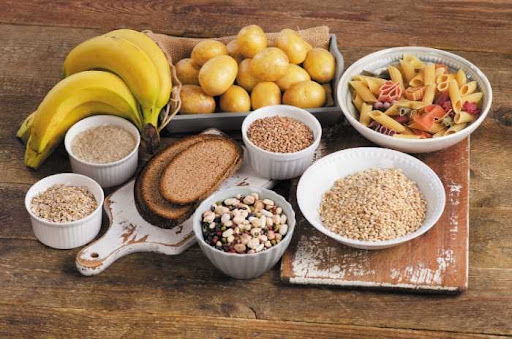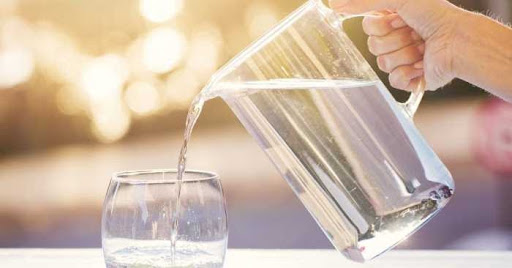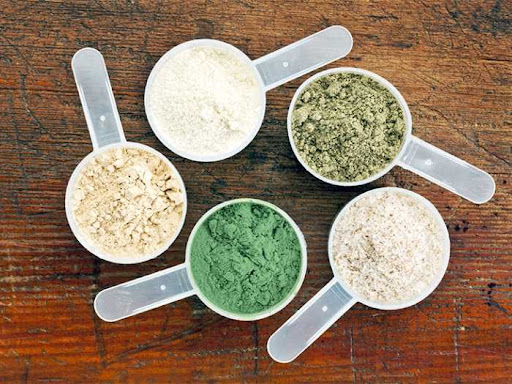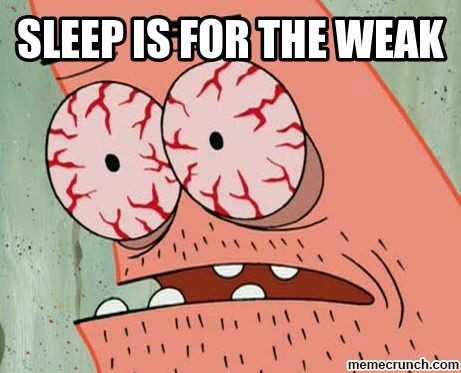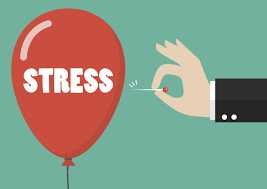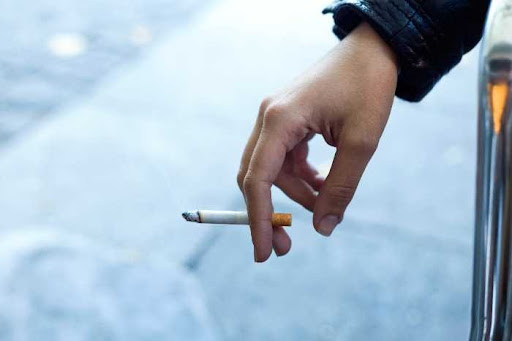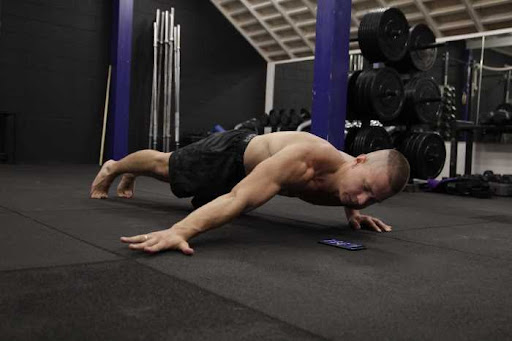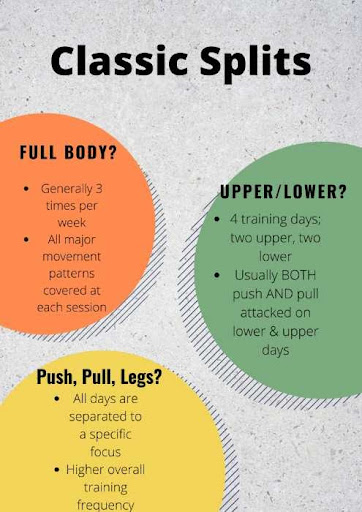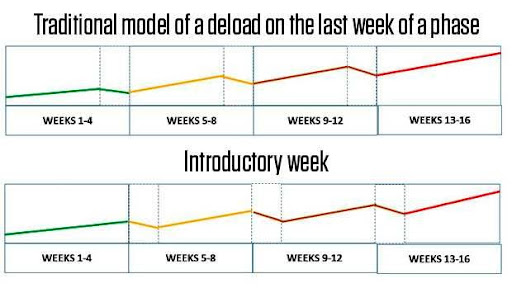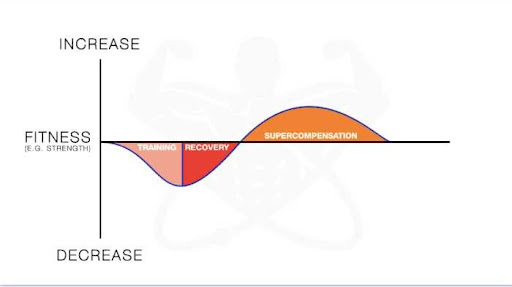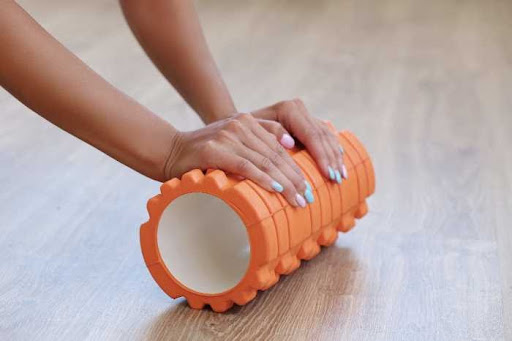Join the tribe of Movement & Calisthenics Athlete – people just like you that are working with their own body weight to get strength, lose fat build muscle, recover from injuries and live their best lives!
The world of fitness is a vast and ever-changing one, which means that people are always looking for new ways to improve their performance. Whether you’re an athlete looking to gain more strength or someone who’s just getting started on their fitness journey, there are some tried-and-true methods that will help you achieve your goals faster.🎯
People tend to focus more on the training factors such as exercises and techniques when aiming to reach their goals. Whether it’s with bodyweight movements or weight lifting or any other disciplines.
✊Although training is a must, WHAT YOU DO POST-WORKOUT plays a VITAL ROLE to the muscle recovery process, which will help you build more muscle, develop more strength, and learn skills in an efficient and safer manner.💯
The following article will provide 14 tips for post-workout recovery – all with varying benefits depending on what your goal may be.
Dealing with muscle soreness😢
But before that, let’s talk about an issue that the average person encounters during their first workout: delayed onset muscle soreness(DOMS). DOMS, to keep it brief, are the muscle aches and pains you experience the day after an intense workout your body’s not yet accustomed to. Many questions surround DOMS, but it’s generally explained as muscle “micro-tears” after intense NEW physical activity.
☝️As mentioned, beginners usually experience this after their first workout. Depending on how intense their workout is, muscle soreness and inflammation could last up to 1 to 2 days and could limit the range of motion of trained joints. Intermediate and even elite athletes can experience this when dealing with a new workout routine or implementing new training strategies.
🤜Muscle soreness is totally normal and could be a sign (but not necessarily) of muscle growth during new workout implementation. Over the course of a few days to a week, DOMS should settle down as the body gets accustomed to the demand.
It sounds counter-intuitive, but the best move to minimize the pain is to continue training 1 to 2 days when pain can no longer hinder training, as 2003 Sports MED peer-reviewed studies suggest. Painkillers, massages, compression garments, and cryotherapy can also provide temporary relief while other methods show no results, as presented by a 2018 meta-analysis.
Training with DOMS still present could potentially interfere with the recovery process. Achieving muscle recovery is our main goal to keep training sustainable especially for beginners.
Let’s talk about DOMS a bit deeper in a separate article.
🤔🤔What happens in muscle recovery
To understand muscle recovery and muscle growth, let’s first understand how we impose muscle growth on our system and the concepts behind it.
Homeostasis – the body’s natural tendency to maintain internal stability and constancy to function regularly. It’s the powerful adaptive process our bodies undergo for survival.
Stress – this is the stimulus we (or external factors) impose on us. Stressors usually are what we need to fight and overcome in order to grow. For this article, we’ll cover mostly the physiological stressors, exercise, as our stimulus to promote growth.
Recovery – during this phase, your muscle-skeletal system adapts so that next time it can handle more workload. That is what we call muscle growth or hypertrophy. In addition, the body aims to achieve homeostasis after experiencing stress AKA exercise.
The body is a powerful and adaptive system. Even if we subject it to an intense and rigorous workout that’s reasonably within its capabilities, muscle recovery and growth to restore homeostasis are inevitable when sufficient requirements are met.
📌HOWEVER, we still need to take careful action and not abuse this powerful system. Not providing enough factors to satisfy muscle recovery can be detrimental to our overall health conditions and compromise the progress made.
So providing equal importance to recovery post-exercise is a must.
💥Factors affecting recovery
Here are the three major factors that can affect our muscle recovery and will be the main topics of our tips for muscle recovery.
⚡️Stress management and sleep
The body doesn’t get stronger during the workout but during rest.
⚡️Nutrition
“You are what you eat.” Nutrition plays a major role in improving body composition (losing fat, building muscle mass) and for every workout goal. What you eat post-workout will tremendously alter your progress and road to recovery.
⚡️Workout
As mentioned earlier, if you want to change and improve your body, you need to impose stress on it and then recover by achieving homeostasis. How you work out matters. Not all types of exercise are the same.
The following tips ensure that you maximize your gains during recovery time in a sustainable manner to keep on improving for life and avoiding any injuries and frustrations in the process.
💥 14 Tips for best post-workout recovery
Nutrition
The general rule for nutrition is to have a healthy diet. Unfortunately, it’s difficult to provide THE ULTIMATE nutritional guidance because nutrition is highly individualistic. Like the best workouts are personalized (Like the ones from The Movement Athlete), the best meal plan should also be personalized to meet the very specific needs of an individual.
However, we can follow a general guideline to achieve a balanced diet that sets us up for success.
General guide on calories
One of the number ones asked questions about diet is how much calories you should intake.
Luckily for us, we can now easily find free online caloric calculators to get a general overview of our caloric needs according to the goals.
Weight loss/fat loss = caloric deficit – Consuming fewer calories than needed to maintain homeostasis. The body will respond by “burning fat”. It’s best to implement a gradual caloric deficit to avoid “crashing” which is a highly unsustainable way to lose weight.
Weight gain/muscle gain = caloric surplus – Consuming more calories than needed. The body responds to developing more muscle and inevitably more fat. A slight caloric surplus is ideal to minimize the fat you will gain.
If you want to build muscle with calisthenics, check out the article below:
📍How to build insane muscle mass using only your bodyweight!
Body recomposition = Slight (100 to 200) caloric deficit – The idea here is you can build muscle and lose fat at the same time. You can do this by implementing a progressive approach to resistance training (our favorite type: calisthenics) and supplementing it with a very slight caloric deficit with a high protein diet.
1. ✅Meet protein requirement
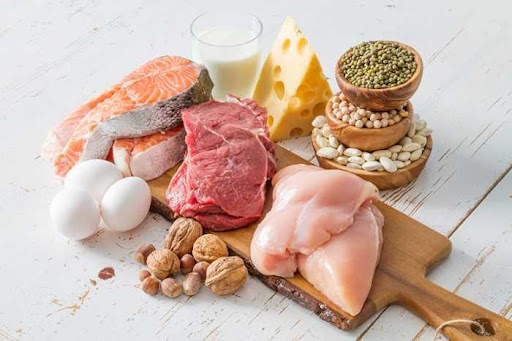
Aside from meeting the caloric needs, making sure that you meet the proper macronutrients shows equal importance, especially with protein.
Protein is made up of amino acids that are the building blocks of muscles. Remember the microtears you get from exercise? 👆Protein initiates muscle recovery by protein synthesis, breaking protein down to amino acids that build up those tears in the muscles so they can grow and get stronger.
International Society of Sports Nutrition recommends protein intake of 1.4 to 2kg of protein per kilogram of body weight for most individuals. More experienced athletes can go up to 3.0kg of protein per bodyweight and can boost.
WARNING: Too much of a good thing is bad!😱
Since protein is the building block of muscles, you can take more if it all the time, right?
NO!
More protein isn’t always a good thing. This is because your body can only handle muscle protein synthesis to an extent. Once it reaches the threshold for protein synthesis, the protein surplus can negatively affect your body, affecting your kidney, liver, and heart, as a 2013 published study supports this with evidence.
Keep everything balanced.🔍
2. ✅Don’t skimp on carbs
Healthy carb options. Photo from Health Harvard
Speaking of balance, your carbohydrate intake should also be within reasonable consumption.
🤜Carbohydrates, mostly known as carbs, is a type of the main macronutrient that’s the primary source of energy of our body. It’s usually in the form of starches, sugars, and dietary fibers.
Especially when trying to lose weight, carbs are usually heavily cut back because of “low carb diets” claims of losing fat quickly.
A 2006 meta-analysis shows that people on a low-carb diet can get the same results as people undergoing a low-fat (moderate carb) diet. This goes to show that carbohydrate isn’t actually really the bad guy.
Overal caloric intake is a major factor when working on your physique. Cutting out the carbs wouldn’t help.
⚡️Carbs develop muscles glycogen that’s broken down into energy when working out. Muscles glycogen stores from carbohydrates. Without replenishing carbs, you’ll easily fatigue and won’t be able to recover from the exercise. You’ll definitely feel this the next training day.
Keep glycogen levels balanced to sustain energy levels, especially for endurance athletes such as endurance runners or cyclists.
3. ✅Drink plenty of fluids
Photo courtesy of Medical News Today
Even if you’re not feeling thirsty yet, drink plenty of water before, during, and after your workout.✔️
A recent 2020 study published by King and Baker shows that dehydration affects workout performance and post-workout recovery. More research is needed on this topic regarding recovering from muscle damage-induced exercise, but it’s pretty clear that staying hydrated is necessary to maintain workout performance and overall general function.
Remember that losing 2% or more of your body weight due to dehydration can heavily impact your performance.
What about sports drinks?🤔
Sports drinks are primarily imbibed due to electrolytes. While it can help in maintaining the hydration levels, it would highly depend from person to person. Drinking regular water is enough to keep thirst and dehydration at bay.
4. ✅Supplementation
Photo from Healthline
😲This is quite a controversial topic. There’s a lot to talk about, like growth hormones intake to increase testosterone levels and the likes, but we can go in-depth in a separate article.
To cut it short, supplementation is also high individualistic, like nutrition. It’s best to focus on whole foods then use supplements to meet what you are lacking.
Usually, protein whey isolates are the best supplementation for the general public that doesn’t offer that many side effects (other than potentially making a slight dent in your wallet).
✊A diet of high protein can aid muscle repair. You can get most of the protein for whole foods, but meeting a protein requirement sometimes could be difficult, especially if it can make you eat more calories than you need. Protein powders are great for meeting the protein requirement while keeping the calories relatively low.
Here’s a simplified but excellent explanation of Jeremy Either of Build with Science on how to choose the best protein powder supplementation.
Remember, protein builds muscles and aids muscle recovery. Choose a protein powder that’s transparent with the included amino acids, so you’re sure that the protein powder is packed with the good stuff and not just packed with fluffers.
Lifestyle
We’ve already mentioned earlier that you get stronger when muscles recover during rest. Therefore, taking care of your post-exercise habits by improving lifestyle changes will not only improve your recovery but also raise your general fitness level physiologically, mentally, and emotionally.
5. ✅Get high-quality sleep
Say it with me, “sleep is NOT for the weak.” If you ever heard that saying, remove it from your brain and remember that sleep is for the strong and for those who want to get stronger.💯
Unfortunately, sleep is usually a neglected part of recovery in the globally competitive era we live in. Sleep deprivation hinders the recovery process and harms our physiological and mental state. Lack of sleep is so bad that it even alters our cognitive state to the point that it’s worse than getting inebriated, which is why you might be making more regretful decisions such as working out when you’re sleep-deprived.
What type of sleep works?
So now that we’ve established the importance of sleep, it doesn’t mean that as long as you get “some” sleep, then you’re good to go.
✨There are many studies regarding sleep, and they seem to show that it’s highly individualistic as well. But the general guideline is to get at least 7 hours of HIGH-QUALITY, UNINTERRUPTED sleep per day. For example, the more active your lifestyle is, you have a physically demanding job on top of your regular workout, then a higher number of hours is recommended.
👊Focus on achieving a good range of sleep that works for you and on sleep quality as well. Be sure to be as relaxed as possible when resting. This will boost your recovery process and elevate your general fitness levels.
6. ✅Manage stress
Photo from Medvisit
🔎Stress has a complicated relationship with exercise, as shown in this comprehensive analysis. Exercise can help deal with stress, but not all the time. Stress can deter an individual from working out, while sometimes, it can help them pursue a higher level of fitness.
Aside from stress effects exercise, stress also affects the recovery of your muscles as a 2014 study conducted an experiment with individuals of varying levels of stress. They underwent a session of strength training, and their recovery was monitored over a 96-hour period.
After the analysis of data, the highest level of stress produced the worse recovery among the subjects.
This can be attributed to the release of the hormone cortisol when individuals are under stress which prohibits protein synthesis. This leads to more time for muscles to recover and could potentially increase the risk of injury and illness.
✊When stress eats you up, take a deep breath and know that you’ll always have someone to support you and help you out on what you’re going through.
7. ✅Avoid toxins
📌A healthy lifestyle is balanced, but there are substances that your body is far better off without such as nicotine and alcohol.
We’re not trying to impose this one on you, but a heavy set of evidence supports that it wreaks havoc to the general health of any fitness goals you would like to achieve.
Nicotine
Photo from nensuria of Freepik
✊Nicotine is a substance that can be obtained from tobacco. It’s a stimulant that also interferes with multiple body functions. There are literally tons of ways a stick of cigarette can bring harm to your body.
It can impair muscle recovery by directly destroying blood vessels that deliver nutrients and oxygen to the leg muscles, as a recent study shows.😢
Another one is by altering the muscle glycogen synthesis, which results to the slower recovery of the muscles. An obvious one is immediate damage to the lungs, which affects your breathing capacity and workout performance.👎
Quitting smoking isn’t an easy task for some. Seek help professionally and/or support from a community to avoid damages it can potentially do.
Alcohol
Photo from Jcomp of Freepik
What are rest days if there aren’t any alcohol, am I right?
Luckily for us, a recent 2019 study shows that alcohol doesn’t seem to affect muscle recovery parameters immediately. Instead, muscles recover even with a post-workout inebriation.
✊ALTHOUGH, long-term effects are a different story, especially if alcohol consumption intake is as consistent as exercise.
Going back to the nutritional guide, keep alcohol in moderation and don’t do it every rest day. Alcohol is also empty calories, so it might be slowing down your progress somehow.
Training
Ah, the fun bit: let’s cover factors that affect recovery in your workout.
8. ✅Gradual progressive overload
Resistance training, whether you’re lifting weights or using calisthenics, requires progressive overload to get stronger and improve.
☝️Exercise-induced muscle damage is inevitable, but if you don’t want to experience severe soreness after your workout, you can gradually increase the intensity of your workout. This minimizes the chances of reaching over-exertion in the first attempts of your new training session.
Keep it moderate, then increase the intensity, volume, or other factors gradually.
9. ✅Rest days
To achieve recovery, you have to respect your rest days. Although now, there are during your rest day, you don’t necessarily have to rest like a couch potato even if you had an intense workout. Instead, you can include very light and non-tiring movements such as light mobility work or a long walk to improve blood flow which helps in faster recovery.💯
10. ✅Programing & scheduling
Photo from Straight Talking Fitness
Intense training days usually require a longer rest. For example, a muscle group usually requires 24 to 48 hours of rest between workouts to maximize protein synthesis and muscle glycogen for growth. This is why there are different types of training programs in terms of scheduling, mainly; full and splits.
✊A full-body workout hits all muscle groups in a single day. It’s usually done with a high intensity which requires you to take a complete rest day after each exercise so you’ll have more off days per week. It’s usually done three times per week.
✊A split workout is a common way to train in weightlifting and is also implemented in calisthenics and other fitness disciplines. Based on the name, Split splits the workout per muscle group or per function such as push and pull. This type of approach lets you create more volume. After you train a muscle group for one day, you can train the opposite one the day after. Less off days, and you can even get away with just one rest day per week as scientific literature supports. Ideally, hit 2 to 3 times per muscle group/function per week.
Check out our list of workouts below:
📍Most EFFECTIVE and EFFICIENT Bodyweight Workouts
11. ✅Deload week
Photo courtesy of Institute of Personal Trainers
To keep it brief, deload is a planned “rest” that lasts for a week.
Why the air quotes?🤔
You’ll still have to train, but you have ☑️two options:
Option 1: Regress to easier progressions that keep the workout lighter
Option 2: Slightly increase the rep range by 1 or 3 BUT reduce the sets in half
✊This allows your body to recover from the weeks of subjecting your body to physiological and psychological stress when working out. However, eventually, you will get burned out. To combat this, we implement the deload week.
You can refer to the graphic below from Build with Science to understand how you make progress over your training period.
🤜Work out requires consistency, and proper programs usually last weeks to even months physical adaptation takes several weeks to kick in. Although, when we train, we create muscle damage and fatigue, which weakens us, we grow stronger as we follow proper recovery habits.
Unfortunately, stress from the workout can wear our muscles, joints, and mental state, so we need a deload week when working intensely. 💯
The deload week lets us recover while keeping the movement pattern and strength active. As a result, Supercompensation kicks in and boosts our overall progress.
Remember, physical recovery is vital but so is the mental aspect as well.
Planning deload week into your workout program lets you prepare for the potential drop of strength gains so you can achieve supercompensation. Apply a deload week after 4 to 6 weeks of your regular training program.
12. ✅Consider the type of training
Generally speaking, intense workouts such as muscle development require you to train near muscle failure or strength training that exhausts your nervous system subjects your body to heavy loads and demands. This means that in order to recover faster and better, you need to adjust it according to your intensity and goals.
👊Consider also how long you should rest in between your sets and each exercise to maximize your efforts and time in training.
13. ✅Active recovery
Photo from Racool_studio of Freepik
Active recovery, as mentioned earlier, is basically doing light activities using the muscle groups you trained that day.
Self-myofascial release is done by using foam rollers or a lacrosse ball to give yourself a massage after a workout, reducing muscle soreness and aiding in muscle recovery. You can implement it after your workout and target deep tissue of the muscles used in the workout. Not only will it improve recovery, but it will also improve the range of motion of your joints and muscles over time. Take a good 10-minute session of foam rolling after your workout.
Another type of active recovery done right after or a few days after a workout is doing a very light variation of the exercises you trained for that day.
👍Research supports that this significantly reduces muscle soreness which can help improve your capability to get back to your workout. Next, it’s the cooldown phase of the workout but instead of stretching, do light but dynamic movements such as walking after a leg day or swimming after an upper-body day.
14. ✅Listen to your body for muscle growth
👀The ultimate tip we have for you is simple: LISTEN TO YOUR BODY.
Your body offers many clues to what it needs. You get thirsty; then it means you need water. Drink water. You get tired; then it means you might be overtraining. Take a day off.
Yes, the body is powerful enough to adapt, but it takes time to adapt, and the process is gradual.🎯
No matter how hungry you are to improve your physique, learn a new skill, build strength, don’t abuse your body, and let it rest. Your body will reward you for staying consistent with your workout and letting it recover in the process.💪
Conclusion
Follow these tips, and you’ll surely be able to recover and get stronger, better than ever.
But what’s the point of recovery if your training program isn’t giving enough stimulation, to begin with.
Cookie-cutter or one-size-fits-all programs have been increasingly getting dominant in the fitness industry, and for a reason: It’s easier to sell to the masses. But, unfortunately, these types of programs can be doing more harm than good in the long run.
What you need is a personalised program that caters specifically to your needs, goals, and wants. If you want to check out the BEST adaptive and personalized calisthenics program ever, take this short assessment first so you’ll know where you can start in your fitness journey.
READY TO GET ON THE JOURNEY OF A LIFETIME?
See what our users are saying:
“Would you rather have the ability to boast of bench pressing 300 pounds or to do a one-arm pull-up? To me, pulling my entire body up with one arm is much more impressive. – Michael -The Movement Athlete User”
“The Movement Athlete is not the kind of program that demands you to be this physically fit to be able to perform. Instead, it caters to your own strengths and capabilities and keeps track of your progress.”
“Stick with it! It is hard at first, especially if you are stuck on a lower-level, high rep exercise. But persevering is worth it! Finally reaching each goal is so exciting.”

